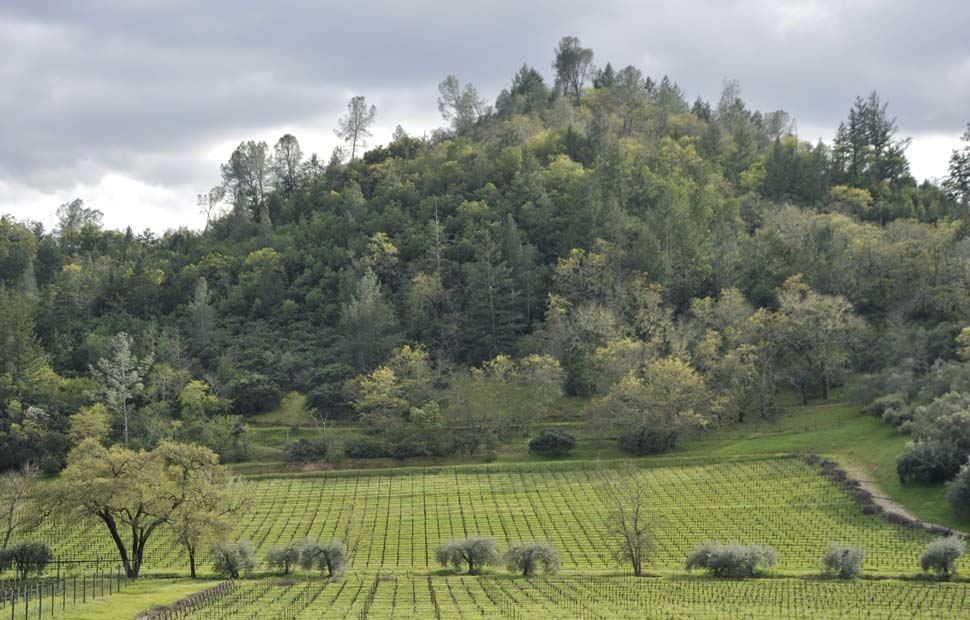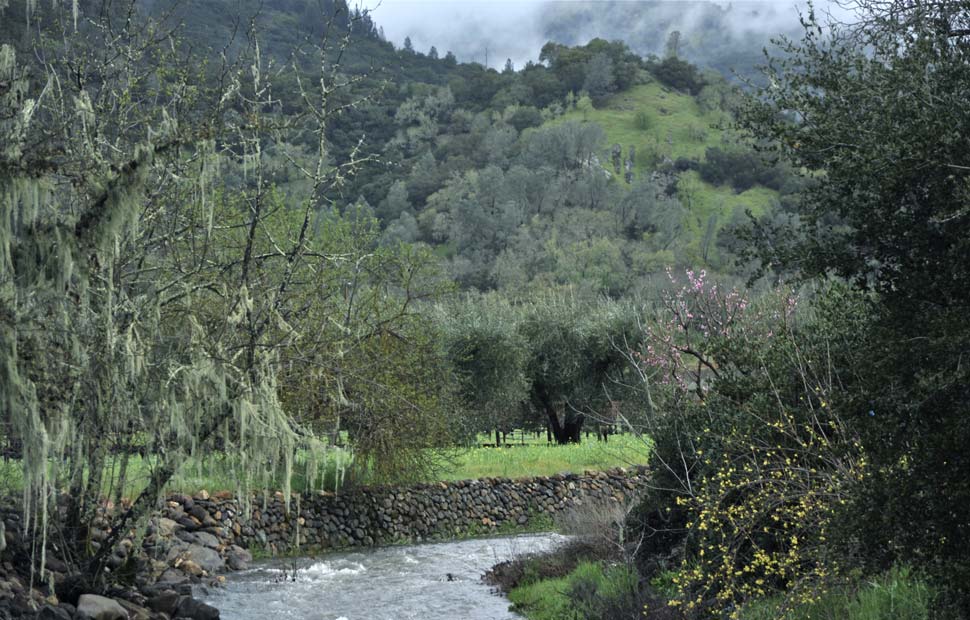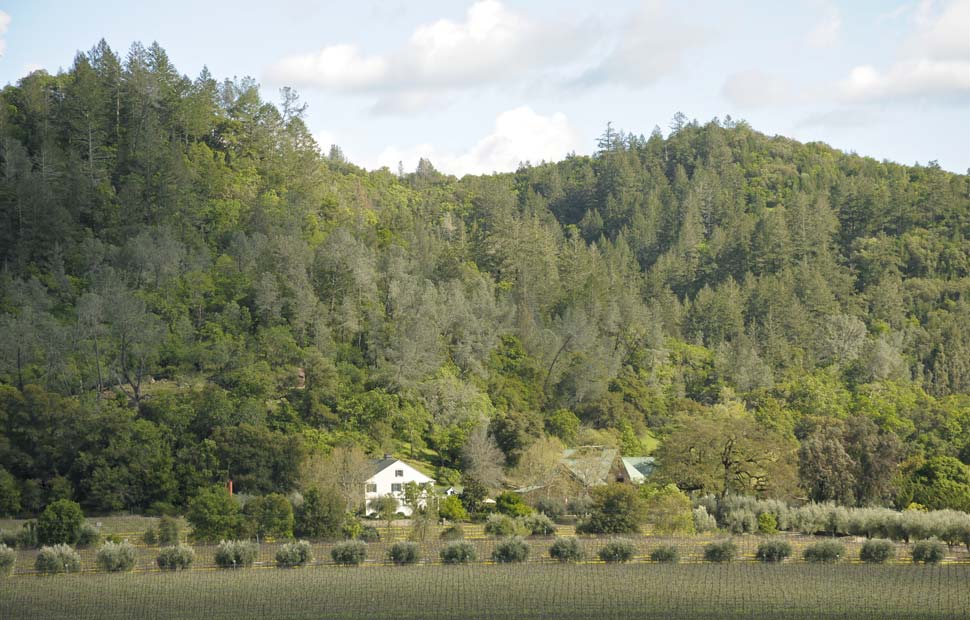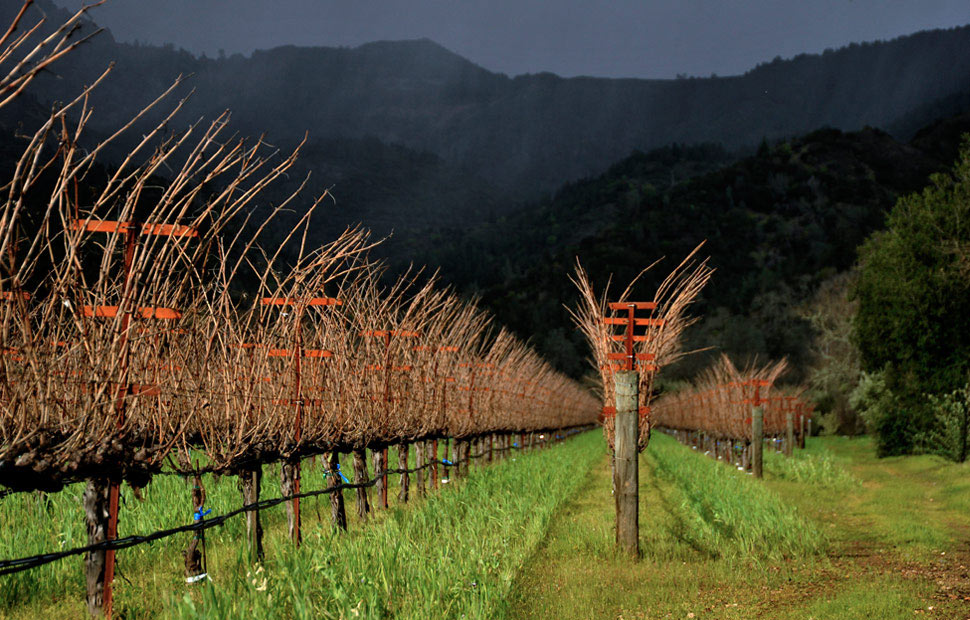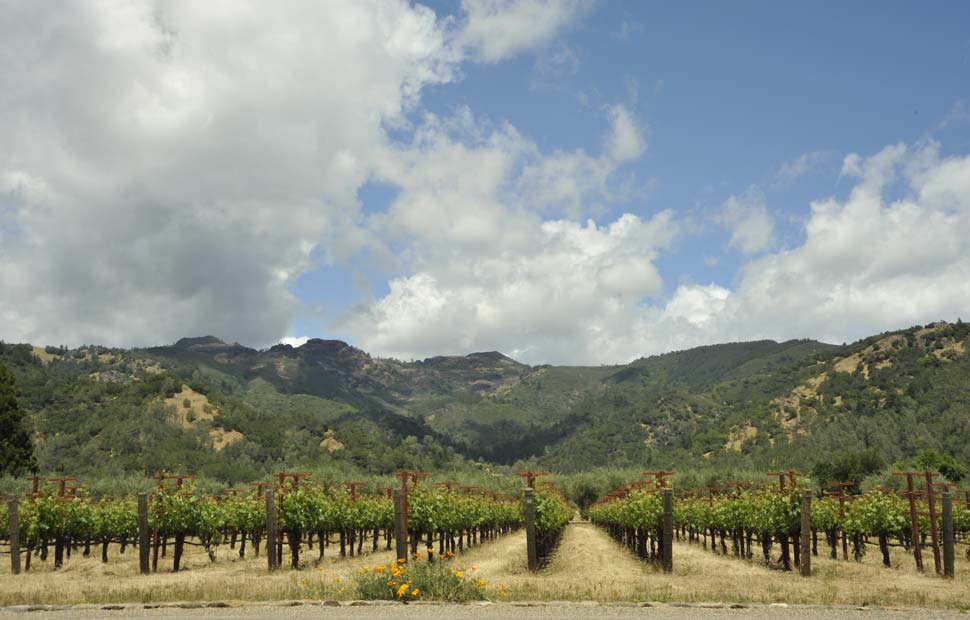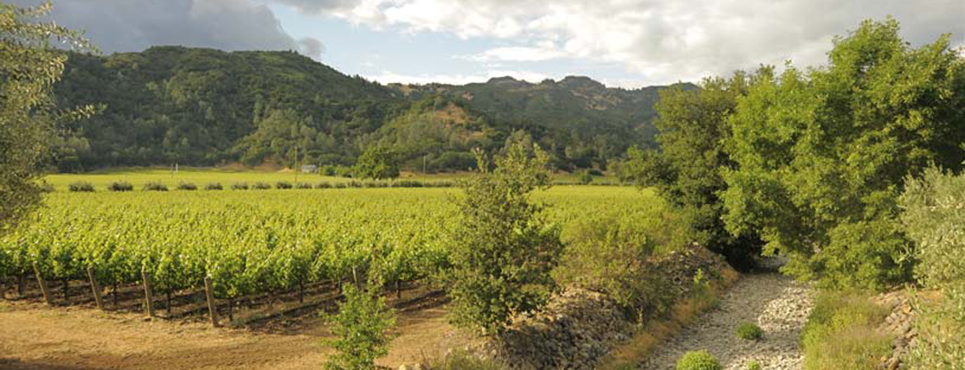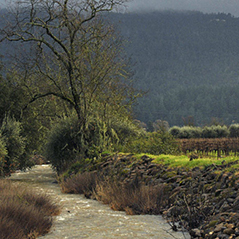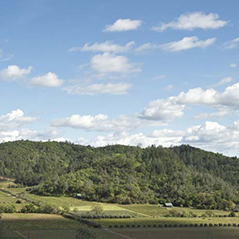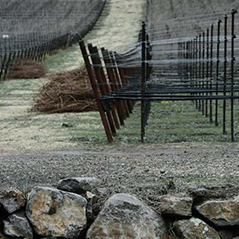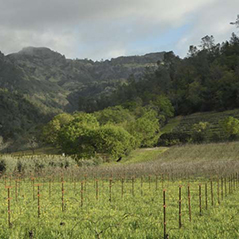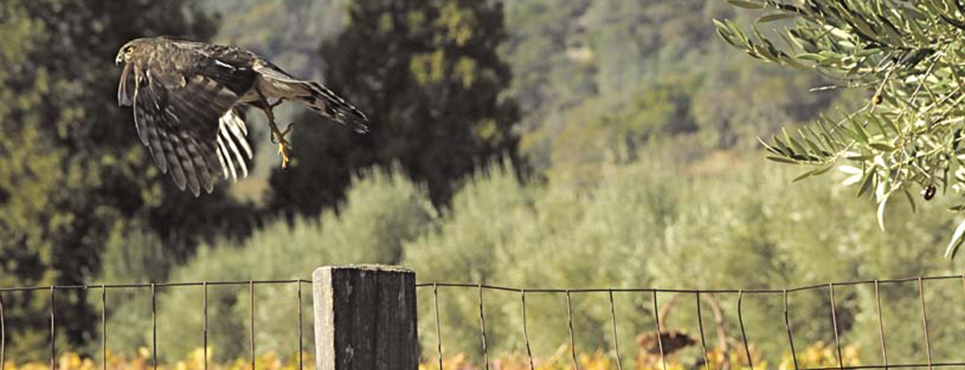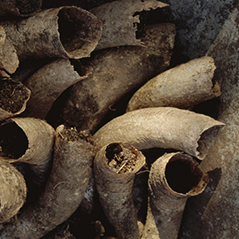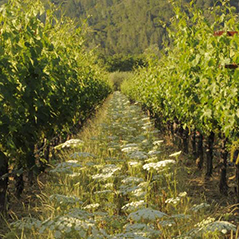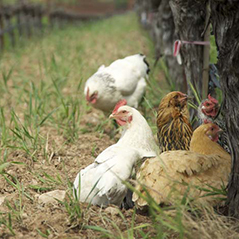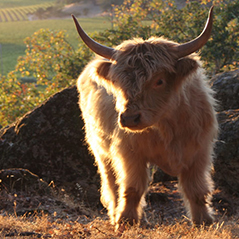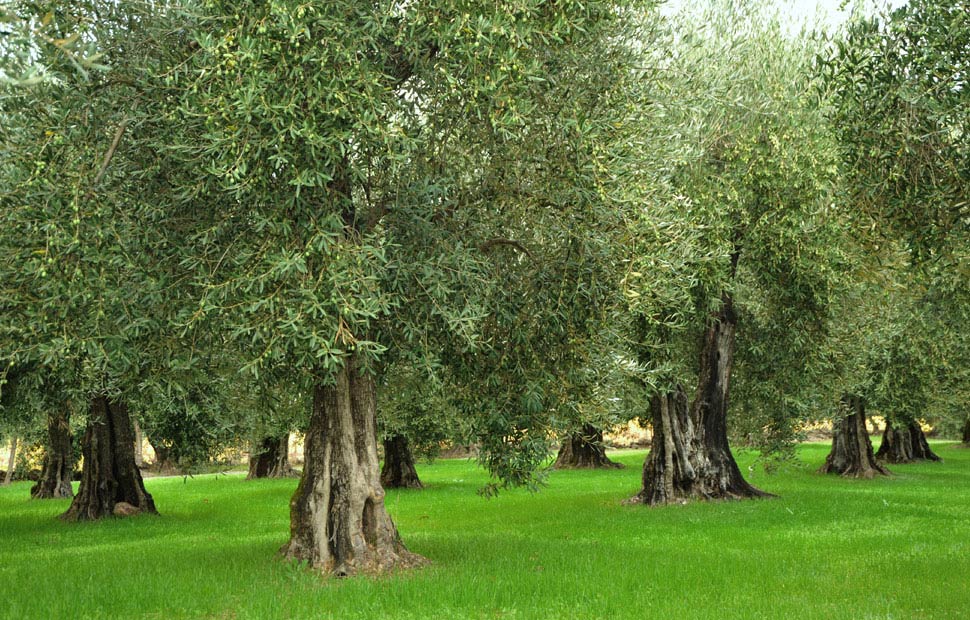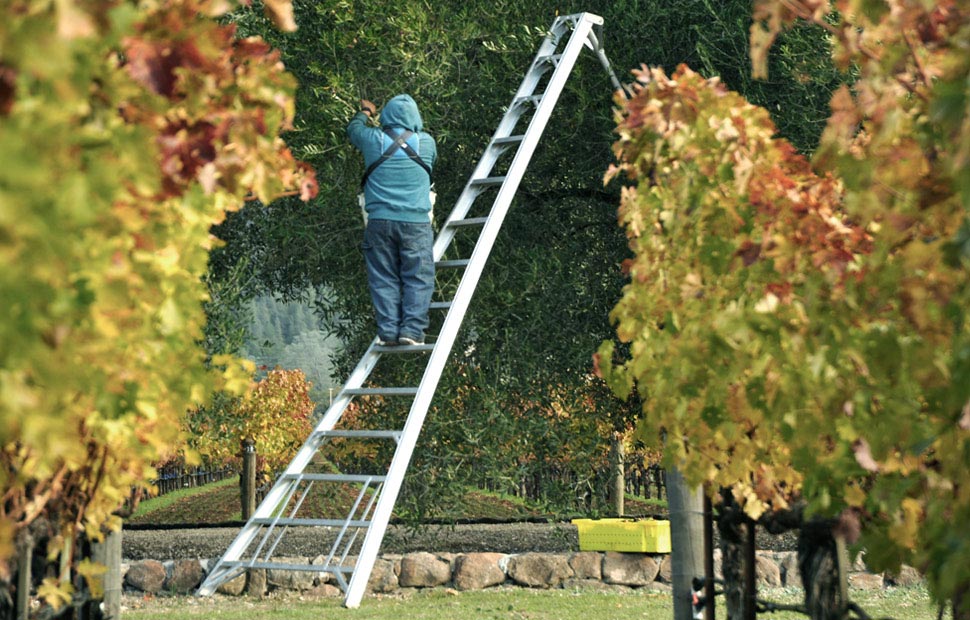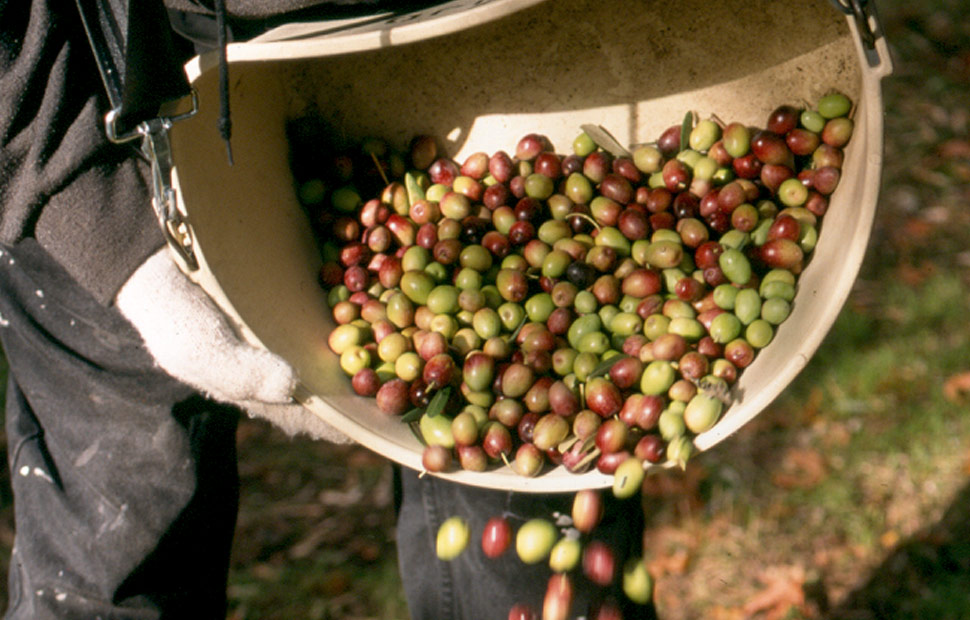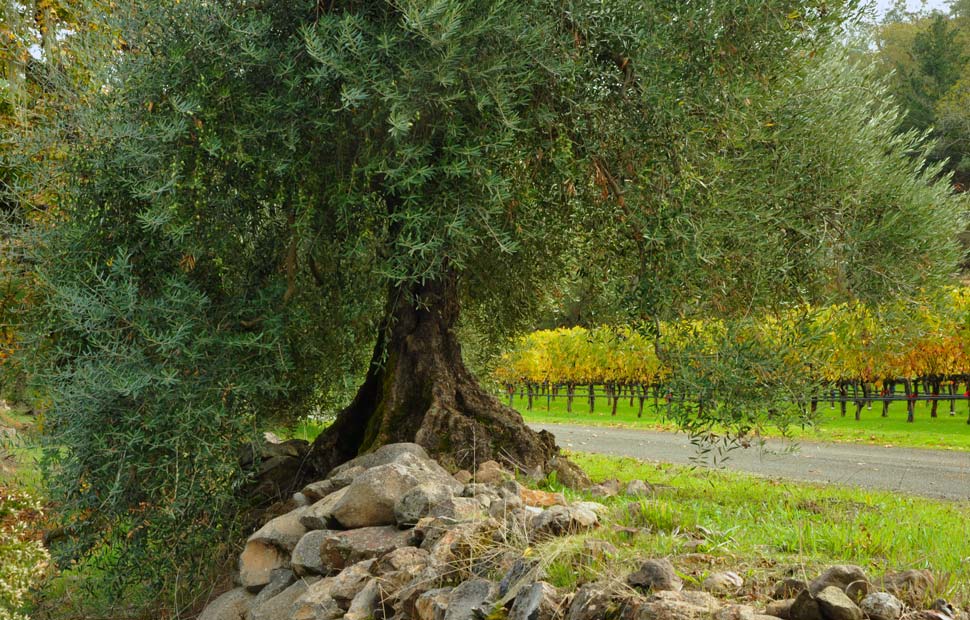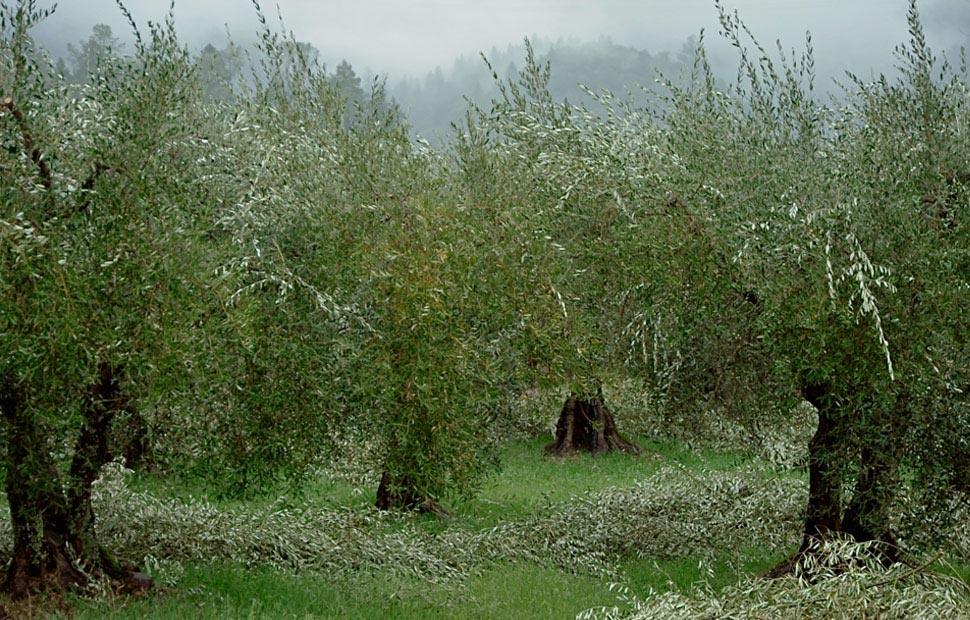
Eisele Vineyard
The heart of the Estate is the Eisele Vineyard, an iconic and historical vineyard that
leaves an indelible mark on the wines that are grown there.
Since 1971, some of California's most age worthy and intensely flavored Cabernet Sauvignons have been made from grapes grown at the Eisele Vineyard, located on an alluvial fan near the northern end of the Napa Valley, just east of Calistoga. Protected by the Palisades Mountains to the north and cooled by westerly breezes from the Chalk Hill Gap, this 38-acre vineyard is planted on well-drained cobbly soils that produce a low yielding crop of exceptionally concentrated fruit.
The wines produced in this remarkable place have a rare combination of forthright character with precisely defined flavors and fine textures, deep concentration without any sense of heaviness, and the capacity to develop profound complexity with age. The Eisele Vineyard was originally planted in the 1880s to Zinfandel and Riesling, and has been under vine continuously since then. The first Cabernet was planted in 1964.
Estate Map
The terroir of the Eisele Vineyard is at once complex and intellectually satisfying.
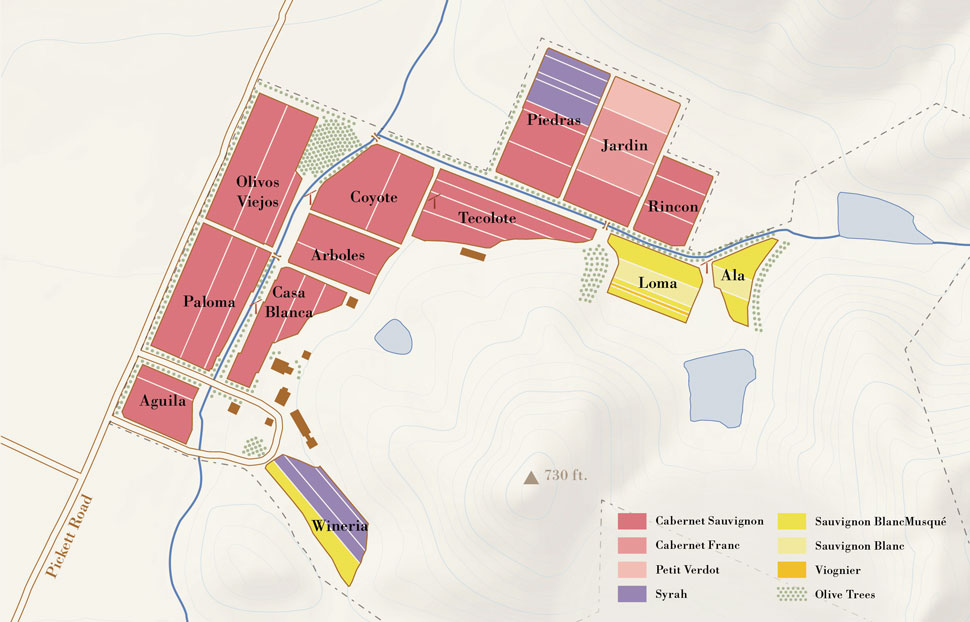
The vineyard is divided into 13 blocks and over 40 sub-blocks, reflecting the nuances of its soil and subsoil. The names of the blocks correspond to notable features in the surrounding landscape, and were chosen by the team who have cared for the vineyard over many years.
Terroir & Geology
The unique terroir of the Eisele Vineyard emanates from the geography of the estate, defined and dominated by the forces of water and mountains.
The term terroir describes the unique environment of a vineyard, from its soils, slopes, and aspects to its climate, microclimates, and weather patterns. A memorable wine can nearly always be traced to the terroir of its vineyard. It is a wine that expresses an unmistakable sense of place.
The Eisele Vineyard is affected by two water courses – Simmons Creek, which bisects the estate, and a small perpendicular tributary flowing from the east. These waterways have spread an alluvial fan of volcanic cobbly soils from the surrounding Palisades Mountains, deposited by intense storms during the wet winters.
Between the creek bed and the foothills lie gentle slopes formed from soils that gradually settled through weathering and gravity. In summer, when there is scant rain in California and creeks are dry, groundwater is available only at great depth. This extraordinary soil configuration allows deep roots to seek moisture in the stony subsoil. Combined with the cooling Northwestern winds coming through Chalk Hill Gap, it allows the vineyard to fare seamlessly under climatic pressure and offer considerable consistency in quality. Vines growing in these dry, rocky soils produce very small berries of thick-skinned, intensely flavored grapes.
Organic & Beyond
To reinforce the unique terroir of our vineyard, we follow organic and biodynamic practices, using cover crops and biodynamic preparations made from the herbs and flowers grown on our property.
The Eisele Vineyard has been farmed organically since 1998, and biodynamically since 2000. We do this for two reasons: our belief that these practices result in better wine, and our commitment to caring for this pristine vineyard in the most thoughtful and conscientious way that we can.
Organic farming feeds the soil, enriching the diversity and vitality of microorganisms and thereby improving the health of the vines and complexity of grape flavor. We forego the use of inorganic fertilizers, pesticides or herbicides at Eisele Vineyard. Instead, we rely on practices such as composting to increase the activity of microorganisms in the soil and planting cover crops that control erosion and provide habitat and food for beneficial insects as well as green manure for the vines. As a result, our soils and vines – as well as our orchards, vegetable and flower gardens – are naturally healthy and more resistant to disease and climate stress.
We also embrace the biodynamic approach to agriculture, a set of principles first described by Austrian scientist Rudolf Steiner in the 1920s. Biodynamics prescribes using the rhythms of nature – the sun, moon, planets and stars – to guide the timing of farming practices as a means of ensuring the health, vigor and vitality of the crop being grown. The balance and harmony afforded by biodynamics enable the vines to fully express their innate qualities and likewise, enhance the wines’ ability to reflect the unique character that emanates from this vineyard.
In addition to operating according to organic and biodynamic principles, we are ever mindful of our imprint on the environment around us. Our efforts to help restore the Napa River's native riparian corridor are ensuring healthy streams and riverbeds for future generations. Our adoption of water and energy conservation, pollution prevention and waste reduction practices have led to our certification in the Napa Green Land and Napa Green Winery programs as well as Fish Friendly Farming.
Olive Orchards
Estate production of wine and olive oil together can be traced back millennia in the Mediterranean, and olive trees have grown for more than a century on the Eisele Vineyard.
There are more than five hundred olive trees on the Eisele Vineyard estate, many dating back to the late 1800s and early 1900s. Our predecessors, Daphne and Bart Araujo, revived these old and once-neglected trees and began producing an extra-virgin olive oil in the 1990s. We continue the tradition, applying the same organic and biodynamic farming practices we use in the vineyard.

